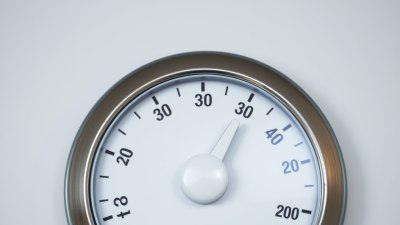The Psychological Toll of Dressing for 60 Degrees When It’s Actually 47
Explore the psychological impact of misjudging temperatures and its effects on our daily choices.

This image was created with the assistance of Freepik
The weather influences our daily lives in more ways than we realize, particularly in how we dress. When the forecast predicts a pleasant 60 degrees, but we step outside to discover a chillier 47, the psychological impact can be surprisingly significant. This article delves into the nuanced emotional and cognitive responses elicited by misjudged temperatures and the personal narratives woven through our clothing choices.
The Discrepancy Between Expectation and Reality
The first element at play when dressing for a temperature difference is expectation versus reality. When we prepare for a day based on a seemingly agreeable forecast of 60 degrees, the optimistic outlook can set the stage for a positive day. However, once we’re met with the stark reality of the colder temperatures, disillusionment sets in immediately. This mismatch can create feelings of frustration and discomfort, leading to a domino effect on our mental state throughout the day.
The Comfort Zone and Its Impact
Each individual has a personal comfort zone regarding temperature and attire. For some, dressing in layers for a chilly 47 is an essential practice, while others hold fast to summer-like clothing for as long as they can. The abrupt shift impacts one’s comfort levels deeply; being underdressed can lead to physical discomfort and exacerbate feelings of vulnerability and unease. This, in turn, invokes a psychological toll, affecting mood and potentially even social interactions.
Expectations of Others
In social situations, the perception of others is a significant factor. If you show up to a group gathering dressed for 60 degrees, yet the brisk air has others bundled in thicker attire, feelings of inadequacy or embarrassment can arise. The internal dialogue shifts as we question our choices—did we misread the weather? Were we too hopeful? These thoughts can swirl in our minds and affect our self-esteem and social confidence.
Impact on Productivity
When we are physically uncomfortable, our cognitive abilities can take a hit. Dressing for warmer weather when it is colder might lead to constant distractions—being aware of the cold can hamper focus, particularly in work scenarios where concentration is key. When our bodies are distracted by frigid air rather than engaged in our tasks, productivity suffers. This lack of productivity heightens stress and can lead to feelings of defeat, further compounding the psychological toll.
Fashion vs. Function
The dichotomy between wanting to dress fashionably and dressing functionally can create added pressure in our choices. Fashion trends often dictate light, airy garments for what seems like pleasant weather, yet if our intuition about the temperature is met with surprise, we face the ambition of style versus the practicality of warmth. This dilemma also touches on personal identity—dressing in a way that feels true to oneself versus conforming to external temperature cues creates an inner conflict that can influence one’s emotional state.
Emotional Resilience and Coping Strategies
The good news is that challenges can also encourage growth. Building emotional resilience amidst uncomfortable clothing experiences is crucial. Engaging in mindfulness activities, such as deep breathing or grounding techniques, can help shift focus from discomfort to acceptance. We can learn to adapt our expectations to align more realistically with the elements we face—jotting down weather assessments each day can help refine our future choices.
Finding Balance in Dressing
To mitigate the psychological impact of dressing for the wrong temperature, finding a balance is key. Investing in a versatile wardrobe that includes mid-layer options can ease the tension of cold snaps. Choosing clothing that combines fashion and functionality allows for a better harmonization between expected temperatures and current conditions.
Conclusion: Embracing the Unexpected
Ultimately, weather discrepancies remind us to embrace uncertainty and cultivate adaptability in our daily lives. The psychological effects of dressing for a faux pas temperature can indeed weigh heavily, but they also present opportunities for growth and learning. By taking the time to reflect on our choices, we can mitigate discomfort, improve our resilience, and enhance our overall well-being as we navigate the complexities of everyday life.
Call to Action
Next time the forecast feels like a cruel joke, remind yourself that you’re not alone. Embrace the temperature, find joy in the layered experience of clothing, and relish the stories your choices tell. After all, life is a patchwork of unexpected moments, and each chilly encounter can remind us to appreciate both the warmth we seek and the cold we face.











